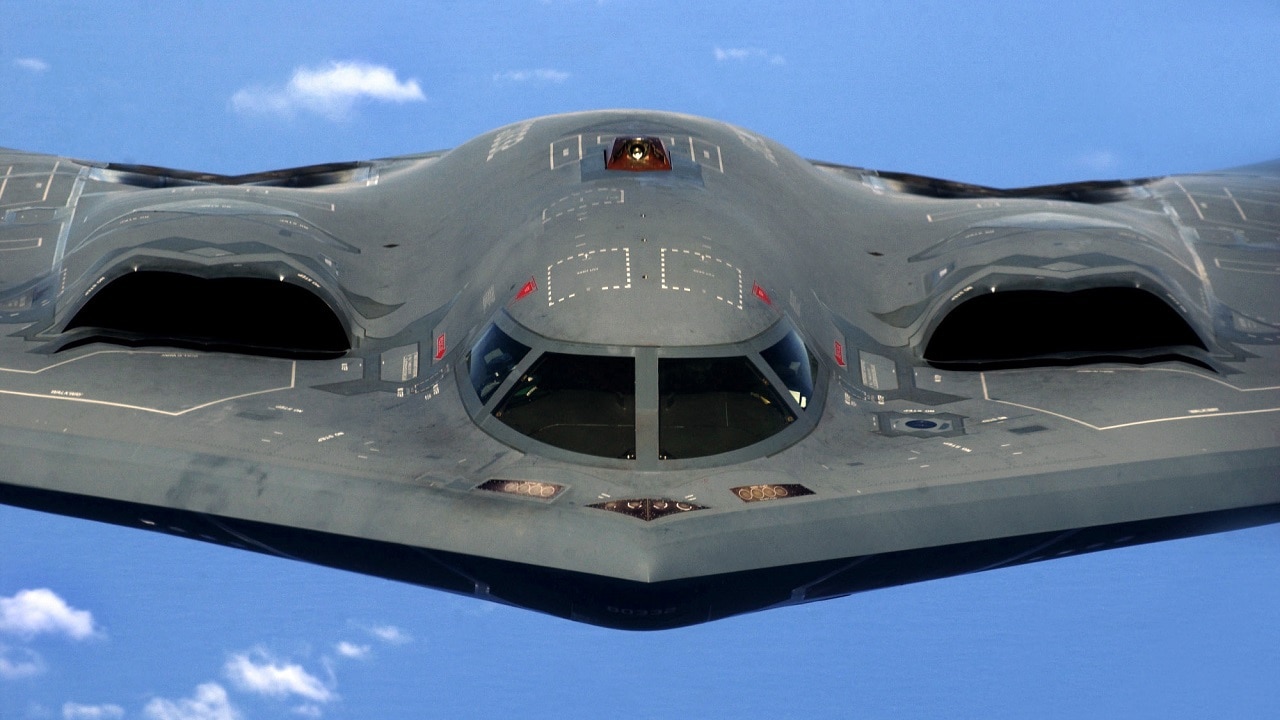The United States Air Force’s B-2 Spirit bombers were cleared to resume normal operations earlier this month, more than five months after they were grounded due to an in-flight malfunction in December.
Normal operations began on Monday, though throughout the “safety pause,” the service had said that the bombers – which are a key component of the country’s nuclear triad – could still be employed if absolutely necessary.
The return to flight was approved by Gen. Thomas A. Bussiere, head of the Air Force Global Strike Command, after the roughly six-month safety pause.
“The B-2 fleet safety pause is officially lifted,” Maj. Gen. Andrew J. Gebara, commander of the 8th Air Force, which controls the nation’s strategic bomber fleet, told Air & Space Forces Magazine earlier this month. “Gen. Bussiere, at my recommendation, made a final determination on the necessary actions taken and approved a return to flight.”
Air Force officials have thus far declined to say what the safety issue was or what was done that has now allowed the B-2 Spirit to resume its normal flight operations.
“I wish that the safety pause was not necessary,” Gebara added. “But I think that it was really important that we find out what happened and make sure that was all mitigated before you start flying again, and that’s what we did.”
Dec. 10 Incident
The entire U.S. Air Force fleet of Northrop Grumman B-2 Spirit strategic bombers of the 509th Bomb Wing is based at Whiteman Air Force Base, Missouri.
The decision to ground the bombers was made after one of the aircraft experienced an in-flight malfunction and was forced to carry out a successful emergency landing on the base’s only runway.
A fire erupted aboard the stealth bomber after landing, damaging the aircraft. The Air Force has not yet released a public version of its investigation into that accident. It was also just a year earlier that another Spirit bomber’s landing gear had failed, causing the Spirit to skid off the runway at Whiteman AFB. That mishap cost the Air Force nearly $10 million, the Air Force Times reported.
B-2 Return to Service
There will now be a “phased approach” as the bombers return to flight, which will reportedly involve the most experienced pilots getting into the cockpit. It will take several weeks for the entire fleet to get back up to speed. As noted, the Spirits – the nation’s only stealth nuclear-capable bomber in service – were still ready for service if necessary.
“The B-2 fleet could still fly missions if so required,” Gebara continued. “Our ability to provide nuclear deterrence never stopped.”
Since its introduction in 1997, the Northrop Grumman heavy bomber has often been the first to fight, as it was designed to penetrate anti-aircraft defenses and can deploy both conventional and thermonuclear weapons.
The U.S. Air Force has a total of just twenty B-2 Spirits in service today – though a total of 21 were produced, down from the original plan to have more than 100 – one was lost in a 2008 crash.
Clearly, following the December incident, the Air Force didn’t want to risk losing any more of the warplanes, which have the dubious distinction of being the most expensive aircraft ever produced.
The Spirit fleet will remain operational until the mid-2030s. However, it was also just days before the emergency landing in December that the Northrop Grumman B-21 Raider was also officially unveiled to the public. It will first supplement and eventually replace the B-2, by which time the Spirit will have been in the sky for just around 35 years.
Author Experience and Expertise
A Senior Editor for 19FortyFive, Peter Suciu is a Michigan-based writer. He has contributed to more than four dozen magazines, newspapers, and websites with over 3,200 published pieces over a twenty-year career in journalism. He regularly writes about military hardware, firearms history, cybersecurity, politics, and international affairs. Peter is also a Contributing Writer for Forbes and Clearance Jobs. You can follow him on Twitter: @PeterSuciu.

